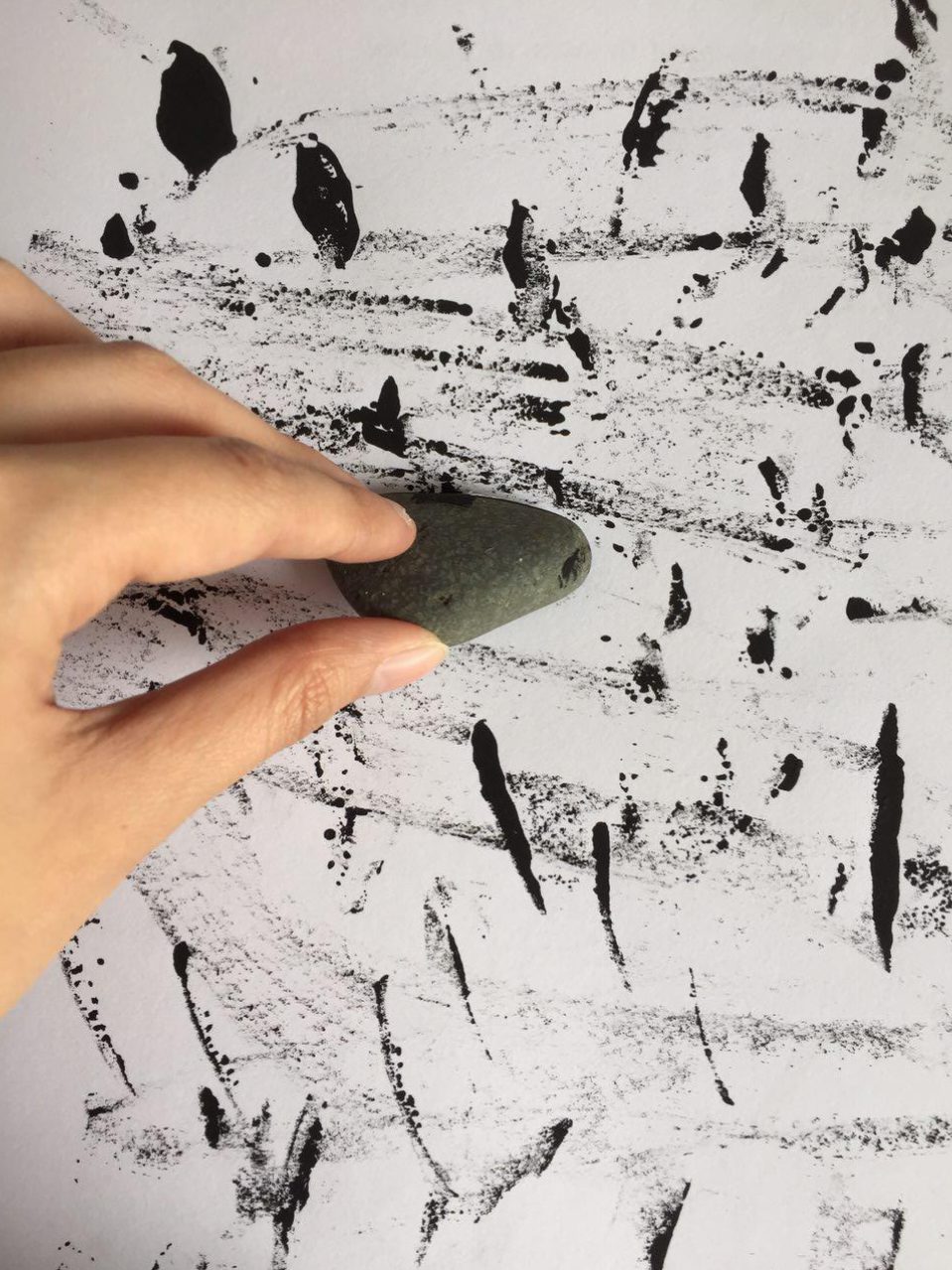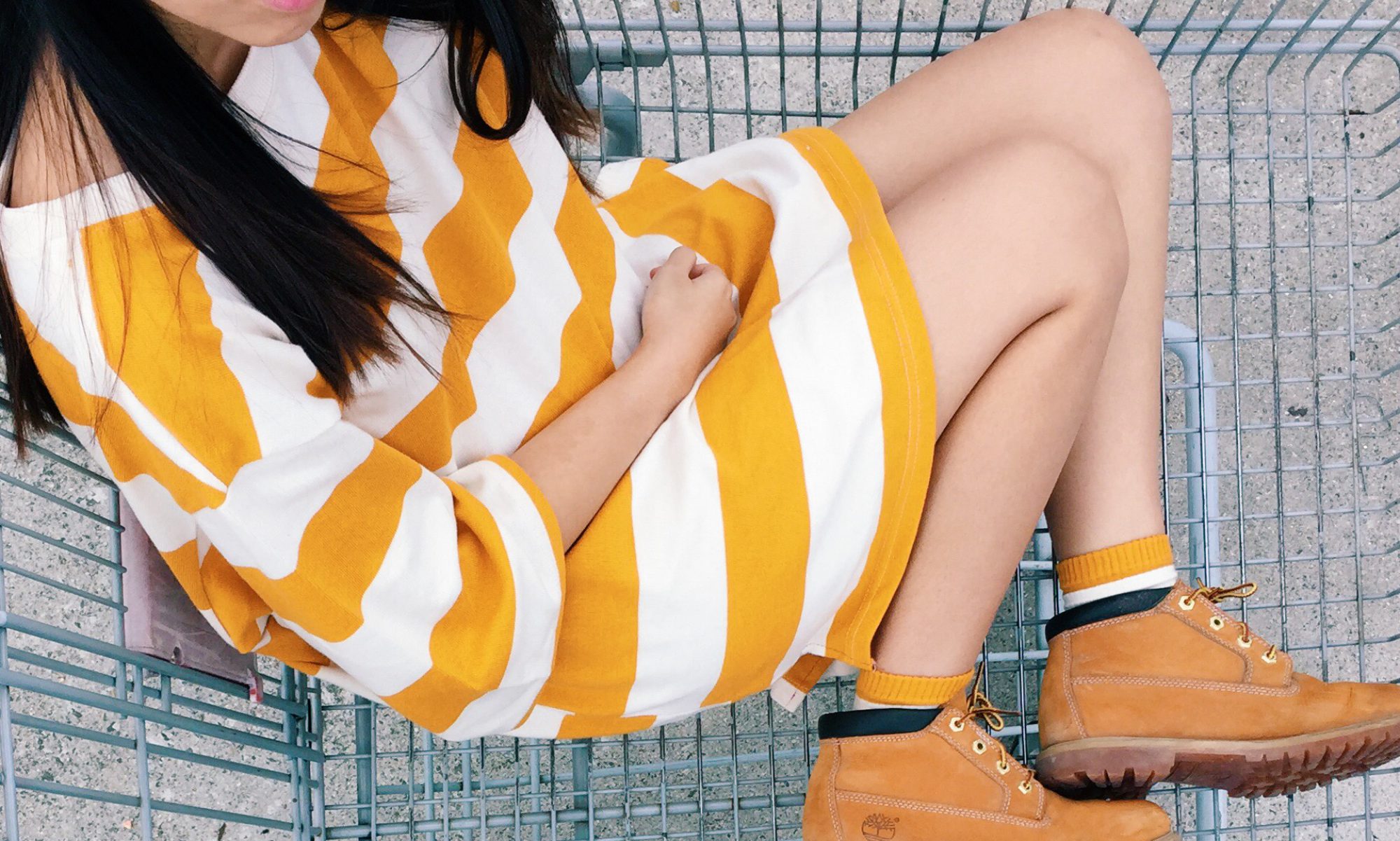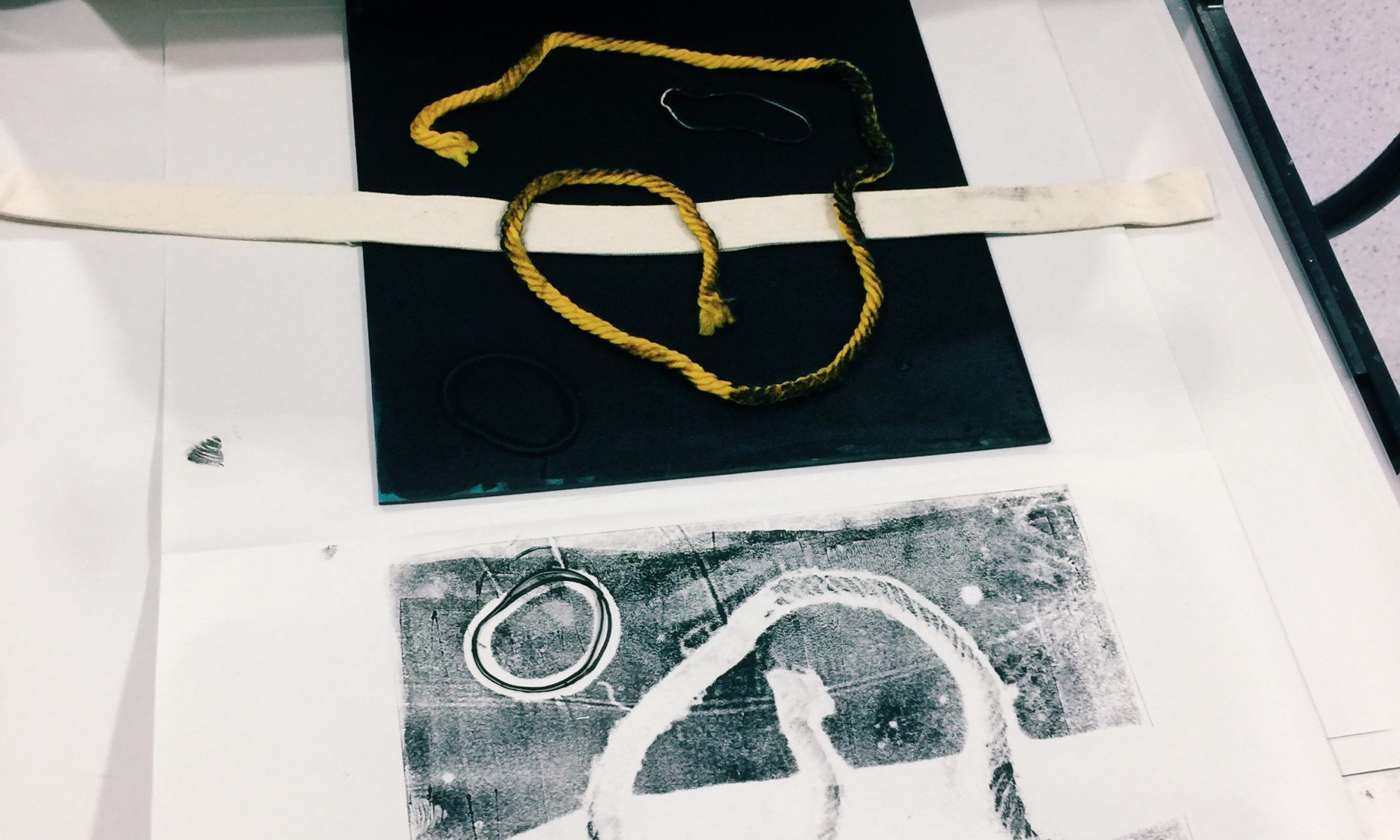MATERIAL STUDIES: stamping with acrylic paint
pebbles

| emotion – surprise / fear / love |
Skinny strokes could express surprise. Depending on how chaotic it gets, it could turn into fear. Thicker splotches could express love.
kitchen towel


| emotion – fear |

| emotion – sadness |


No particular emotion for this variation, just exploring marks, textures and patterns. Ripped patches stuck on canvas seems to be a creative way to do mark making.
scotch tape

Not sure how to incorporate this into any emotional categories yet but can use this method if need to create stiff lines and shapes.
sushi bento box


| emotion – joy / love |
Cluster of inks resemble bubbles and can express affection or excitement. Textured lines resemble a gush of wind to intensify the feeling of joy or love.
toilet roll



| emotion – fear / anger |
- The concentric circles are like cities and the cluster of inks are annihilating them.
- The organic circles clash with the harsh tide of inks to create chaos.
rubber bands

| emotion – fear |
- The short, thin, concentrated strokes express a chaotic lashing of stress.
- The cluster of inks in contrast to the negative space express a rollercoaster of emotions and instability.
plaster


| emotion – sadness |
- To communicate sadness, I thought about expressing the feeling of hurt.
- The rough and uneven textures are made to resemble bruising.
- The dots created by the protective area of the plaster are made to resemble pricking and evoke a sense of incompleteness in the heart.
- The different shades of texture express instability of internal feelings and intensity of feelings. The darker it is, the more intense it is.
- The gradient of lightness to darkness express the feeling of falling from a great height and hitting rock bottom.
- The distribution of negative space in the gradient further emphasise the surge of emotions, the progress of tears welling up in the eyes to crying one’s heart out.
- However, using plaster as a tool may be too literal for expression.
plastic fork

| emotion: joy / surprise |
- Lines travel in a diagonal upwards direction to express peak of happiness.
- Lines are thin streaks, some wavy, some straight, to represent sparks of excitement.
- The negative space is composed this way to evoke a sense of freedom and breathing space, the feeling of relief and emotional burdens lifted that comes with joy.
- The randomness of lines could add an element of surprise.
method studies: stamping with linoleum pad



| emotion – fear |
- The disorderly lines and textures evoke a sense of chaos
- Thin, short strokes are intended to convey uneasiness and anxiety
- The cluster of harsh inks in contrast with the faded prints further emphasise this point.




Using the leftover ink on the linoleum pad, paper was pressed over it while adding circular nail scratches.
| emotion: anger |
- The spiral of lines are intended to resemble a tornado.
- Horizontal lines in the background are made to resemble harsh wind.
- These illustrative metaphors are meant to convey a whirlwind of frustrated emotions.
- Harsh tones and rough textures express frustration and intensity of anger.
- The symmetric form of the circular and horizontal patterns express an attempt to control anger.


Straight lines with occasional waves are formed. Not sure what emotion to associate this with.
method studies: Linoleum monoprint + HAND PRESS



No matter how much strength or force I used, it’s hard to make marks with items that have more depth especially rubber bands, yarn, and paper clip. When used too much force, paper was close to ripping.




| emotion – love |
- The figures in the print intertwine with one another to convey a sense of connection.
- The negative and positive space in the cluster of similar round figures are intended to create the illusion of depth. They are made to resemble floating bubbles to convey the feeling of infatuation.
- The smudging in the cluster of figures express a sense of warmth and gentleness.
- The rough texture in the background express a subtle feeling of insecurity, because being human, no one ever remains constant and there is always a chance the person one derives love from may change.
method studies: Linoleum monoprint + MACHINE PRESS

Step 1: Make sure blanket is fully protected with paper
Step 2: Place paper + linoleum below blanket
Step 3: Adjust clamp just tight enough to make marks
Step 4: Roll

Yarn grooves don’t show when hand-pressed but show when rolled through machine. Background has nice gradients and uneven shadings, made from objects of different depths. Voids in rubber bands also show more when machine-pressed than hand-pressed.


Instead of making predictive straight diagonal lines, making squiggly noodle lines give room for more exploration and experimentation.

| emotion – surprise |
- The use of several different objects composed in random positions are intended to express unpredictability.
- The distorted shapes and asymmetrical lines are used to bring in an element of surprise.

Clean background is created through machine press, forms greater contrast between positive and negative space. The shapes printed are more clearly accentuated as well.


| emotion – love |
- The cluster of circular shapes represent family and community.
- The negative space is contrasted by the harsh scratches of ink around it. It conveys how as a family / community, their bonds will protect them from hurt in society.
- The leave prints are intended to resemble footprints of people that have walked into our lives and mean quite a lot to us.
- The marks inside the circular shapes fill in a portion of their voids to express this feeling of stable love where it is not too intense and not completely empty, but are marked right in their centers to show stability and balance.

